History
The Association, for former British officers of the Sikh Pioneers and Sikh Light Infantry, their wives and widows, was formed after Independence and meet once a year during October, in London. The first record is of the 1950 Reunion and Lieutenant Colonel EPF Pearse was the Honorary Secretary. 32 attendees were from the Sikh Pioneers and 17 were from the Sikh Light Infantry.
A luncheon is organized on the first Saturday of October every year and a quarterly newsletter is distributed to keep members updated on information about the Regiment. General Savory was usually in the chair at the luncheons till his passing away. The 1961 Reunion had Mrs. Clare Spurgin (widow of the co-author, with General MacMunn, of the "History of the Sikh Pioneers") give her talk on her visit to India and visiting the 3rd Battalion Sikh Light Infantry and the Regimental Centre. The 1963 Reunion had Field Marshal Viscount Slim as a guest.
Lieutenant Colonel JF Peart took over as the Honorary Secretary for the Association in 1965.
Three pieces of Sikh Pioneers silver were presented to the Regiment. The magnificent Dragon Bowl (which was the centre piece of the 34th Royal Sikh Pioneers, commemorating their service in China), the Kelly Rose Bowl of the 23rd Sikh Pioneers (commemorating Colonel Kelly's march to relieve Chitral in 1895; and the unique Pioneer Picquet Memorial (commemorating the action of 3/34th Sikh Pioneers on 21 December 1919) Captain Douglas Rees took over as the Honorary Secretary in 1968.
General Frank Messervy was the principal guest at the 1972 Reunion. Captain John Hookway, of 2nd battalion Sikh Light Infantry, took over as the Honorary Secretary in 1974 and continued at this post for over 25 years. He died on 30 June 2005. The 1975 Reunion was highlighted by the visit of Brigadier Goadby to the Regimental Centre.
In 1981 the Colour Presentation saw a large contingent travel to Fatehgarh, followed by another visit in 1984. Subsequent visits have been for the Golden Jubilee of 1st Battalion Sikh Light Infantry in 1991 and the Colour presentation to the 15th and 16th battalions of the Sikh Light Infantry respectively in 1994. General VP Malik attended a reunion in London in 1996 and General Chatterjee in 1997.

The Duke of Wellington's Regiment (West Riding) was a line infantry regiment of the British Army, forming part of the King's Division.

The Calgary Highlanders is a Canadian Army Primary Reserve infantry regiment, headquartered at Mewata Armouries in Calgary, Alberta, Canada. The regiment is a part-time reserve unit, under the command of 41 Canadian Brigade Group, itself part of 3rd Canadian Division, one of four region-based Canadian Army divisions. The regiment is one of only two regiments in the Canadian Forces to wear an honorary distinction on their uniform, commemorating the counterattack at Kitcheners' Wood. On 9 January 2015, the regiment was recognized with the Canadian Forces' Unit Commendation for outstanding contributions to the war in Afghanistan.
Listed in the table below are the insignia—emblems of authority—of the British Army. Badges for field officers were introduced in 1810 and the insignia was moved to the epaulettes in 1880. On ceremonial or parade uniforms these ranks continue to be worn on the epaulettes, either as cloth slides or as metal clips, although on the modern 'working dress' they are usually worn as a cloth slide on the chest. Although these insignia apply across the British Army there is variation in the precise design and colours used and it can take some time to become familiar with them all.

The Royal Canadian Regiment (RCR) is an infantry regiment of the Canadian Army. The regiment consists of four battalions, three in the Regular Force and one in the primary reserve. The RCR is ranked first in the order of precedence amongst Canadian Army infantry regiments, but in a quirk of the rules of seniority, its 4th battalion is ninth.

The Canadian Guards was an infantry regiment of the Canadian Army that served in the same role as the five regiments of foot guards in the British Army. The regiment was formed on 16 October 1953, by Lieutenant-General Guy Simonds, the Chief of the General Staff of the Canadian Army, with the redesignation of four separate battalions:

The 4th Gorkha Rifles or the Fourth Gorkha Rifles, abbreviated as 4 GR, is an infantry regiment of the Indian Army comprising Gurkha soldiers of Indian Gorkha or Nepalese nationality, especially Magars and Gurungs hill tribes of Nepal. The Fourth Gorkha Rifles has five infantry battalions. The regiment was raised in 1857 as part of the British Indian Army. In 1947, after India's independence, the Fourth Gurkha Rifles became part of the Indian Army as the Fourth Gorkha Rifles.
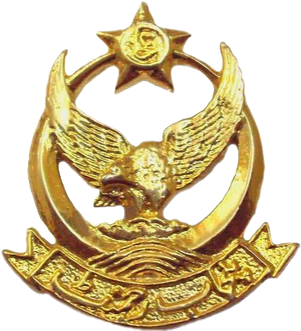
The Punjab Regiment is an infantry regiment of the Pakistan Army. The regiment takes its name from the historic Punjab region, which is now divided into the Punjab province of Pakistan and the Indian states of Punjab, Haryana and Himachal Pradesh. It was raised in its current form in 1956, following the amalgamation of the 1st, 14th, 15th and 16th Punjab regiments that were inherited by the Dominion of Pakistan from the British Indian Army upon the Partition of India. Since then, the regiment has expanded in size to 63 battalions.
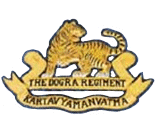
The Dogra Regiment is an infantry regiment of the Indian Army. The regiment traces its roots directly from the 17th Dogra Regiment of the British Indian Army. When transferred to the Indian Army like its sister regiments, the numeral prefix was removed. Units of the Dogra Regiment have fought in all conflicts that independent India has been engaged in, making it one of the most prestigious and most decorated regiments of the Indian Army.
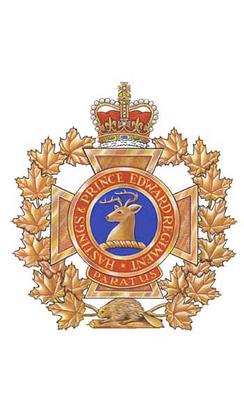
The Hastings and Prince Edward Regiment is a Primary Reserve infantry regiment of the Canadian Army. The regiment is part of 33 Canadian Brigade Group, one of four brigade groups of 4th Canadian Division. The regimental headquarters and one company are at 187 Pinnacle Street in Belleville and on Willmott Street in Cobourg, with another rifle company in Peterborough. The Peterborough Armoury houses what was traditionally B Company or Moro Company. Moro Company also serves as the headquarters for the regiment’s Assault Pioneer Platoon. Normally, the regiment deploys as a composite, Ortona Company, while the headquarters and administration form Somme Company.

The Royal Winnipeg Rifles are a Primary Reserve one-battalion infantry regiment of the Canadian Army. Nicknamed the "Little Black Devils", they are based at Minto Armoury in Winnipeg, Manitoba. The Royal Winnipeg Rifles are part of 3rd Canadian Division's 38 Canadian Brigade Group.
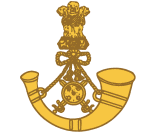
The Maratha Light Infantry is a light infantry regiment of the Indian Army. It traces its lineage to the Bombay Sepoys, raised in 1768, making it the most senior light infantry regiment in the Indian Army.
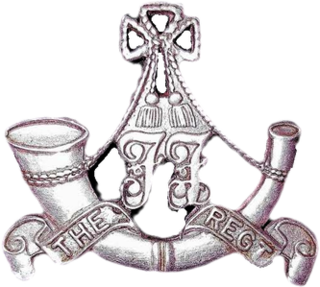
The Frontier Force Regiment is one of the six infantry regiments of the Pakistan Army. They are popularly known as the Piffers in reference to their military history as the PIF of the British Indian Army, or as the FF. The regiment takes its name from the historic North-West Frontier, a former province of British India and later Pakistan.
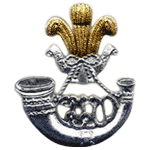
The Sri Lanka Light Infantry (SLLI) is the oldest regiment in the Sri Lanka Army and the oldest infantry regiment in the army. It is made up of sixteen regular battalions and nine volunteer battalions, and is headquartered at the Panagoda Cantonment, Panagoda.
The Golden Jubilee Honours for the British Empire were announced on 21 June 1887 to celebrate the Golden Jubilee of Queen Victoria on 20 June 1887.
The King's Birthday Honours 1923 were appointments in many of the Commonwealth realms of King George V to various orders and honours to reward and highlight good works by citizens of those countries. The appointments were made to celebrate the official birthday of The King. They were published on 1 and 29 June 1923.
The New Year Honours 1915 were appointments by King George V to various orders and honours to reward and highlight good works by members of the British Empire. They were announced on 1 January 1915.
The 1915 Birthday Honours were appointments by King George V to various orders and honours to reward and highlight good works by citizens of the British Empire. The appointments were made to celebrate the official birthday of The King, and were published in The London Gazette and in The Times on 3 June 1915.
The 1917 Birthday Honours were appointments by King George V to various orders and honours to reward and highlight good works by citizens of the British Empire. The appointments were made to celebrate the official birthday of The King, and were published on 4 June and 19 June.
The 1917 New Year Honours were appointments by King George V to various orders and honours to reward and highlight good works by citizens of the British Empire. The appointments were published in several editions of The London Gazette in January and February.
The 1919 New Year Honours were appointments by King George V to various orders and honours to reward and highlight good works by citizens of the British Empire. The appointments were published in The London Gazette and The Times in January 1919.










